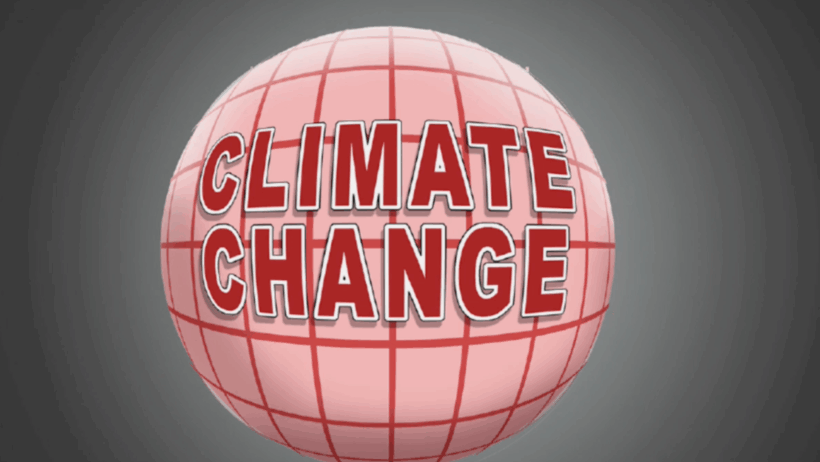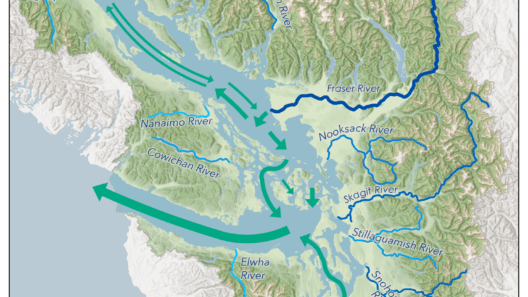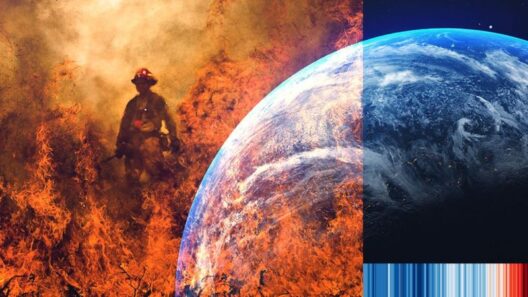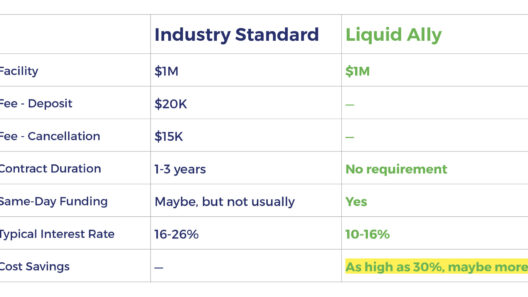In the vast expanse of human history, myths and misconceptions have often tugged at the strings of public consciousness, like shadows in the twilight. The notion that climate change is merely a hoax sits as one of the more insidious chimera among us. This belief stands in stark contrast to a zealous scientific consensus, underscored by a plethora of evidence. Disentangling fact from fiction necessitates a meticulous examination of the data, the climate systems in play, and the monumental shifts unfolding within our world.
To fully comprehend the magnitude of climate change, one must envision our planet as a delicate yet resilient tapestry, intricately woven with threads of atmospheric gases, ocean currents, and ecosystems. Each thread is vital: the carbon dioxide we exhale, the sunlight that dances upon the Earth, and the temperature fluctuations that give life to diverse flora and fauna. However, what happens when these threads are overstretched or manipulated? The answer is profound and alarming.
Scientific research elucidates the undeniable fact that our planet’s climate is changing. The Intergovernmental Panel on Climate Change (IPCC), an authority in the field, states with overwhelming confidence that human activities—particularly the burning of fossil fuels and deforestation—have pronounced impacts on global temperature rises. The weather patterns we once considered stable are now evolving swiftly, resembling an artist’s brush strokes becoming erratic with each passing second.
Temperature records provide a vivid tableau of this change. The last few decades have witnessed an unprecedented warming trend, with 19 of the warmest years recorded since 2001. Each increment, though it may seem trivial on the surface, accumulates as a tangible threat, fundamentally altering ecosystems, economies, and ultimately, human lifestyles. This chronic increase in temperatures is likened to a slow, pernicious boil, simmering until the boiling point is reached, leading to unfathomable consequences.
Yet, amidst the churn of data, remnants of misunderstanding persist. The argument asserting climate change as a hoax often arises from a dulcet chorus of skepticism, birthed from a complex interplay of ideology, misinformation, and a reticence to alter conventional modes of life. Some detractors latch onto isolated data points, cherry-picking instances of climate variability to bolster their claims. However, such tactics fail to align with the grand mosaic of climate science, which demands a holistic examination rather than a selective portrayal.
Furthermore, the concept of “scientific consensus” is crucial in this dialogue. Renowned organizations, including the National Aeronautics and Space Administration (NASA) and the National Oceanic and Atmospheric Administration (NOAA), assert that over 97% of climate scientists agree on the human-induced nature of climate change. This consensus commands the authority of collective knowledge, drawing from years of rigorous research, empirical data, and a commitment to uncovering factual clarity.
But what of the effects of climate change? The repercussions manifest starkly across ecosystems and communities. Polar bears, often regarded as the canaries in the collective coal mine, navigate shrinking ice caps, illustrating the broader narrative of biodiversity at risk. Oceanic changes, such as increased acidification and rising sea levels, threaten marine ecosystems, leading to disturbances that ripple through food chains, impacting fisheries and coastal populations alike.
It is imperative to recognize that climate change extends beyond natura; it fundamentally intertwines with socioeconomic aspects as well, shaping policies, displacing communities, and widening inequities. Vulnerability to climate disasters disproportionately affects marginalized populations, exacerbating existing disparities. This phenomenon can be likened to a cascading waterfall, where the initial drop appears small, but the force is capable of shaping the landscape dramatically over time.
In contrast to the rhetoric of hoax, a proactive approach reveals an intricate dance between technology and environmental stewardship. Innovations in renewable energy showcase the potential for transformative change. Wind turbines turning gracefully against the horizon and solar panels gleaming under the sun symbolize hope against the tides of climate-related challenges. Investment in sustainable practices can lead to economic revitalization, emissions reduction, and an overarching shift towards resilience—a symphony capable of harmonizing humanity’s needs with the finite resources of our planet.
Deeper introspection also unveils the importance of altering narratives. It is crucial to steer the conversation towards constructive frameworks that foster engagement rather than dismissal. Education and public awareness play a pivotal role in unraveling the myths surrounding climate change. Disseminating scientific literacy can embolden individuals to make informed decisions, sparking grassroots movements that challenge the status quo.
Ultimately, the question “Is climate change a hoax?” becomes less of a simple inquiry and more of a reflection on humanity’s willingness to confront uncomfortable truths. As the ominous clouds of misinformation loom, the illuminating light of science beckons us to traverse the path toward understanding. Denial may offer momentary solace, yet actively engaging with the reality of climate change illuminates a way forward—toward accountability and action. Times of crisis demand collective response, and the discourse must shift from skepticism to collaboration, fostering an environment ripe for innovation and change.
In conclusion, the pretense that climate change is a mere fabrication must be laid to rest, subsumed by the undeniable reality that confronts us. The quest for truth calls upon each of us to perceive the intricate threads of our ecosystem, recognizing the inevitability of change as both a challenge and an opportunity. The once-thought impenetrable veil of doubt disperses in the light of veracity, urging humanity toward a sustainable future, rich in equity, innovation, and harmony with the Earth.






